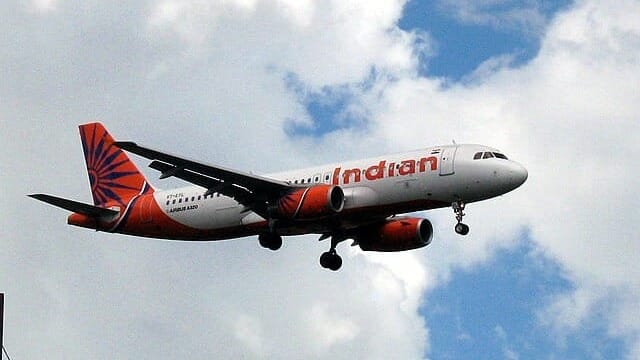
Over the past decade, the number of operational airports in India has risen from 74 in 2014 to 157 in 2024, with plans to reach 350-400 by 2047. Domestic air travel has more than doubled, with airlines expanding their fleets, placing India as the world’s third-largest domestic aviation market, behind the US and China. The Indian civil aviation Maintenance, Repair, and Overhaul (MRO) market is currently valued at approximately $900 million and is expected to reach $4 billion by 2025, growing at a compound annual growth rate (CAGR) of 14-15%. Meanwhile, unmanned aerial vehicles, or drones, have been embraced across various industries, with the Indian drone sector projected to achieve a turnover of up to $1.8 billion by 2026.
Policies and investments driving India’s aviation growth
The 2024-25 budget allocates ₹2,357 crore ($282 million) to the Ministry of Civil Aviation. The Regional Connectivity Scheme – UDAN (Ude Desh ka Aam Nagrik), a core element of the National Civil Aviation Policy (NCAP) 2016, is a major effort to make air travel accessible to underserved areas in the country.
In terms of infrastructure, public-private partnerships (PPPs) are transforming airport management. Six major airports, including Ahmedabad and Lucknow, have been awarded to private operators, with 25 more earmarked for asset monetization by 2025. This move is driving investments into modernising India's airport infrastructure, strengthening operational efficiency, and boosting capacity.
The liberalised Foreign Direct Investment (FDI) policy has opened doors to greater international involvement. Up to 100% FDI is now permitted in sectors such as non-scheduled air transport services, MRO organisations, and ground handling services. This policy change, along with reduced GST rates for MRO, is creating a conducive environment for global partnerships and boosting India’s ambition to become a major aviation hub.
Additionally, the Centre has approved a Production Linked Incentive (PLI) scheme for drones and components, following the liberalised Drone Rules, 2021. A total incentive of ₹120 crore ($14.4 million) is offered, with a cap of ₹30 crore ($3.6 million) per manufacturer. The PLI rate is set at 20% of value addition, one of the highest among PLI schemes, and remains constant for three years. The drone industry's sales turnover is expected to grow from ₹60 crore ($7.2 million) in 2020-21 to ₹900 crore ($108 million) by 2024-25.
In aviation infrastructure, the market is led by conglomerates like GMR Infrastructure, which operates airports such as Delhi and Hyderabad, and the Adani Group, which has rapidly expanded its airport portfolio through acquisitions. L&T Construction and Tata Sons are also involved in the development of airport infrastructure.
India's aviation market is experiencing significant growth, with major airlines such as IndiGo, Air India, and Akasa Air leading the charge. IndiGo's order of 500 Airbus A320s and Air India's combined order of 470 aircraft (220 Boeing 787s and 250 Airbus A350s) demonstrate their ambitious expansion strategies. Akasa Air's purchase of 226 Boeing 737 MAX planes, worth around $20 billion, further underscores the sector's development. These landmark deals are reshaping India’s competitive landscape, setting new industry benchmarks and reflecting growing demand in India's air travel market.
Bhartiya Vayuyan Vidheyak - India's new aviation bill
The Centre has introduced the Bharatiya Vayuyan Vidheyak Bill 2024 in the Lok Sabha, marking a major step towards modernising India's aviation sector. Replacing the Aircraft Act of 1934, which saw 21 amendments, the new Bill aims to align the sector with global standards and comprises 44 clauses.
The Bill will strengthen the powers of the Directorate General of Civil Aviation (DGCA), making it the primary authority for regulating aircraft design, manufacturing, maintenance, operations, and airworthiness. It also establishes the Bureau of Civil Aviation Security to focus on aviation security, with frameworks for passenger screening, baggage checks, and airport protocols.
The Centre is granted emergency powers to handle aviation crises, while the Aircraft Accidents Investigation Bureau will independently investigate aviation incidents. Additionally, the Bill addresses aircraft design and maintenance, introduces compensation mechanisms, and sets out penalties for noncompliance. The transfer of certificate issuance from the Department of Telecommunications (DoT) to the DGCA, and the introduction of Radio Telephone Operator (Restricted) Certificates, further ensures adherence to international standards.
Future outlook
India’s aviation market growth is expected to be driven by the country’s expanding middle class and rising disposable incomes boosting demand for both domestic and international air travel. As a result, airlines are expanding their fleets, benefiting aircraft manufacturers, MRO providers, and related service industries. E-commerce growth is also increasing demand for narrowbody conversions, while the electronics manufacturing industry also fuels cargo requirements. Additionally, the Centre’s regional connectivity schemes are opening up underserved markets, making air travel accessible to a larger population, and positioning India as a global aerospace manufacturing hub.
However, several challenges remain for India, particularly in the areas of taxation and financing. The high taxes on Aviation Turbine Fuel (ATF), which make up 40-45% of operating costs, are a significant burden compared to the global average of 20-30%. Bringing ATF under the Goods and Services Tax (GST) regime or reducing excise duties and value-added tax (VAT) could lessen these pressures and promote sector growth. Additionally, the ratification of the Cape Town Convention is important to improve the leasing environment for airlines, as the current lack of ratification increases financial risk for creditors.
India’s MRO capabilities will require significant investment, as 80% of MRO spending currently goes abroad, particularly for component and engine maintenance. Strengthening the local MRO sector is essential to support the growing fleet and boost job creation, safety, and technological advancement.

